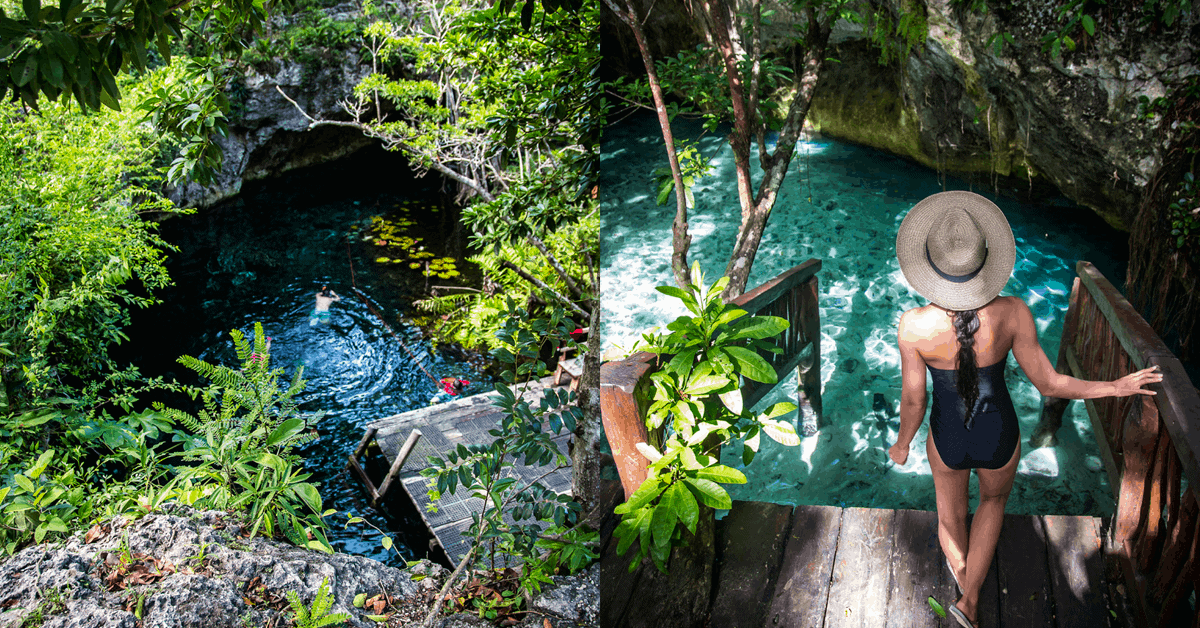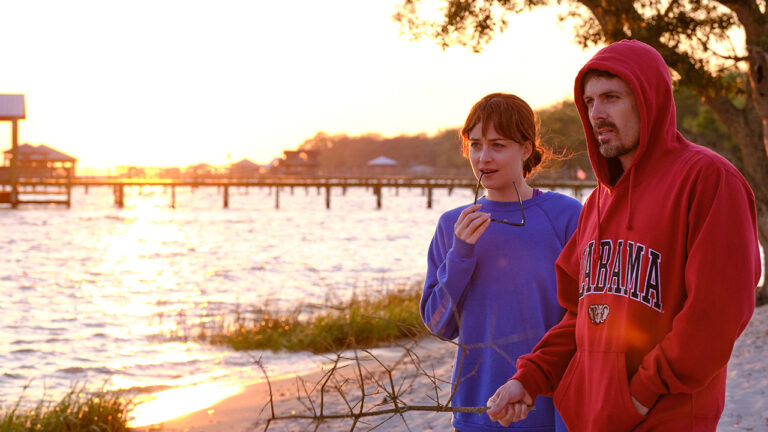The Gran Cenote – A Hidden Gem in the Riviera Maya

Cenotes in Mexico
Over the years, many of the larger and more unique cenotes have become popular with tourists. Consequently, the government has imposed entrance fees for access to many of them. The fees are small and are typically used to upgrade the surrounding area with bathroom facilities or small snack shacks. The government has also designated many of these cenotes as protected ecosystems and implemented some strict rules regarding the use of the cenotes; most notably that you must eschew traditional sunscreen which damages sensitive coral and reef systems.
What is a Cenote?
During our recent trip to Mexico, we had the good fortune of spending time snorkeling at some of the best places on the Riviera Maya. During that same trip, we were able to explore a few of the numerous cenotes that occur in this region, including the popular, Gran Cenote.Stay Stylish,
-VCenotes are prolific in this area of Mexico, occurring both on the coast and inland. They can be open air or within and between caves. Their waters are crystal clear, allowing you to easily see the fish and aquatic life within.
Cenotes in Riviera Maya, Mexico
You also might want to visit one of the following cenotes located on the coast of the Riviera Maya:Just to note, the photos in this post are from the Gran Cenote near Tulum.We’d also recommend stopping to grab a bite to eat at La Coqueta, a charming outdoor restaurant that is on the road from Tulum to El Gran Cenote, so it’s very convenient. Open for breakfast, lunch and dinner, the food and the service is excellent and the prices are reasonable. The fresh fish is wonderful and can be prepared different ways, and you have to try the shrimp ceviche. Washed down with a cold beer or minty Caipirinha and you are good to go!Chief among the cenotes of the Riviera Maya is El Gran Cenote or Grand Cenote, located about twenty minutes inland from Tulum on the road to Coba. As its name implies, this is a very large cenote set amongst jungle greenery. Among its attractions are the caverns that are accessible from the cenote. And by accessible, I mean you do not need to dive or scuba to get to most of them. You can easily swim or snorkel to investigate their interiors which hold underwater stalagmites, stalactites, and columns that are, in my opinion, geologic marvels.
Gran Cenote
While just visiting and swimming in a cenote is fine, you’ll be well rewarded for doing a bit of snorkeling, given the plethora of life that lies below the surface. Peter and I bought snorkeling gear in Cancun when we first arrived and used it multiple times, from Cozumel to Akumal to Xel-Ha. We also used it at the cenotes we visited. Had we rented equipment at each site, it would have cost us five times as much. But know that rentals are available everywhere, from your resort or hotel, local dive shops, and from the sites themselves. Quality and condition of the equipment will vary, so be forewarned.There are two areas here within El Gran Cenote; one when you walk in and another just a few steps away but hidden out of sight. Make sure you look for it or ask the attendants. I also liked that there were several places within the cenote that I could stand and take a break. Perfect for a beginner like me. There are also chairs and an area to relax if you so wish. (And be on the lookout for the families of turtles that reside here.)A cenote (pronounced seh-no-tay) is a naturally occurring sinkhole caused by the collapse of the surrounding limestone. When this phenomenon happens, it exposes groundwater, creating a natural pool. Cenotes are perfect for swimming and snorkeling, with clear salt-free water. The water in cenotes is very cold. Opposite from the warm ocean water you get to enjoy in the Riviera Maya. When you jump in you’ll immediately be refreshed. In fact, after Peter and I left the cenote and drove back to the resort, it was the only time we weren’t hot. The water from the cenote was so cold it kept our bodies fresh.
La Coqueta Restaurant
I had a difficult time deciding which cenote we would visit while in Mexico. There are so many cenotes, and they all looked gorgeous, so I asked a local for some help on narrowing down the options. He explained to me that there are three types of cenotes; open air cenotes, completely covered cenotes (caves), and the last cenote is a mixture of the two. The third type of cenote is the best because you get to get the best of both worlds, you’ll be able to enjoy the open air and if you so desire to explore the cenote caves.Cenote Dos Ojos, close to Tulum, is comprised of two connected cenotes that look like eyes (hence the “dos ojos”) that are located in a cave system. Here you can snorkel between the caves, although the dark pool is a bit claustrophobic with a low ceiling. You can stick to the vivid blue pool. You can also explore some of the caves on foot, admire the stalactites and the bats that cling to them. There is an entrance fee of 100 pesos (≈ US) or 300 pesos for a guide and snorkeling equipment.
Cenote Dos Ojos
There are, quite literally, thousands of cenotes in the Riviera Maya due to the geology of the region. Some are quite small, while others are large and deep enough for exploration with scuba gear.
Cenote Azul
Cenote Azul is located just south of Puerto Aventuras. This large cenote is perfect for beginners and families alike, and even has a cliff from which you can launch yourself into the cenote. You also have the ability to stand in some portions of Cenote Azul, rather than needing to float around, perfect for weaker swimmers. There is an entrance fee of about 80 pesos (≈ US) and equipment is available for rent.
Cenote Ik Kil
Share via:Have you ever visited a cenote before? Because this is a popular spot, I would recommend that you come earlier or later in the day when it is less crowded, and you can enjoy yourself without being on top of others. There is an entrance fee of 150 pesos (≈ US), and you can rent snorkeling equipment, and lockers if you so choose. There are bathrooms as well as changing rooms for you to use on the premises.Also note that you must use biodegradable sunscreen or go without when visiting a cenote. (You can opt to wear a long-sleeve sunblock swim shirt.) If you don’t bring any with you, it is usually available for purchase whenever in a protected environment.






